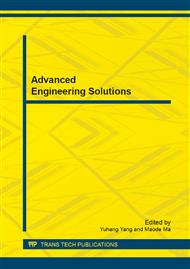p.838
p.843
p.850
p.855
p.860
p.867
p.874
p.878
p.882
Highway Alignment Parameters Design and Capacity Analysis on Two-Lane Highway
Abstract:
A two-lane highway is an undivided highway with only one lane of traffic in each direction. Two-lane highways are one of the most common roadways at mountainous areas in China. Due to the wider range to choose the horizontal and vertical curves in the design of two-lane highways, the combination of both leads to larger differences on two-lane highway capacities. Thus, the highway alignments are one of the key factors which affect the two-lane highway capacities. According to the empirical data and existing studies, it is regarded that there is no impacts on the capacity for horizontal curves with a radius more than 400m and vertical curves with the gradient less than 3%. Two concepts are defined as effective bending and effective gradient which represent the extent the horizontal curve bends and the steepness of vertical curve respectively. The method to calculate effective bending of horizontal curve and steepness of vertical curve is given and its relevant properties are also discussed. According to the simulation results and the principle of speed differences, the effective bending and effective gradient have been classified into 7 and 6 levels, separately. As a result, there will be 42 combinations of different highway alignments of two-lane highways based on the different combinations of the effective bending and effective gradient. Under this circumstance, the relationship of speed-volume and volume-PTSF (percent time spend following) are obtained from the simulation results. Finally, the capacity of two-lane highway is given under different highway alignments of two-lane highway at mountainous areas in China.
Info:
Periodical:
Pages:
860-866
Citation:
Online since:
July 2014
Authors:
Keywords:
Price:
Сopyright:
© 2014 Trans Tech Publications Ltd. All Rights Reserved
Share:
Citation:


